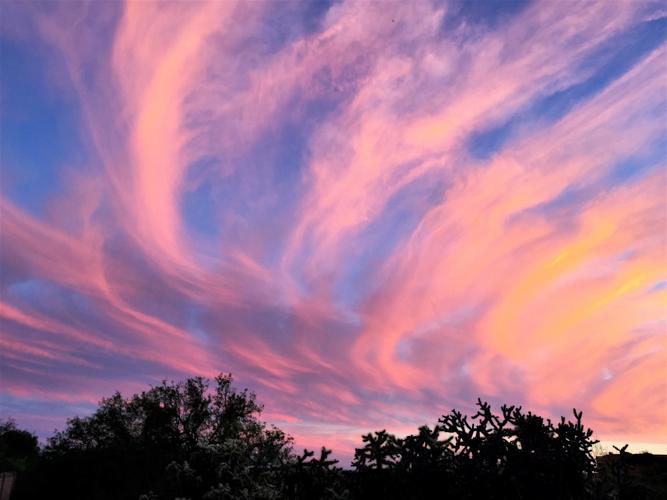Things are looking up. And perhaps we should be, too — looking up at the sky, that is — if we want to fully appreciate the splendor of Southern Arizona at this time of year.
Our skies can range from cobalt blue, to blue with fluffy white clouds, to a dramatic “armada” of clouds sailing overhead, to clouds reflecting dramatic sunset light.
While some parts of the country endure long periods of densely overcast skies, our rainy periods are usually short-lived and are followed with blue skies and comely clouds.
Many of us in Southern Arizona make skywatching a regular part of the day — checking the view overhead soon after first light and again before slipping off to slumber.
Those with an interest in astronomy appreciate the fact that we actually see stars here — thousands of them across a broad expanse of the nighttime heavens.
SKYWATCHING POSSIBILITIES
It’s possible, of course, to look up at the sky whenever we’re outdoors or near a window.
But many of us have found the view overhead can be more dramatic from some vantage points than from others. Some possibilities:
- Vast open landscapes, far from deep canyons or obstructing mountains, that offer expansive sky views. One area to try: Buenos Aires National Wildlife Refuge southwest of Tucson.
- Mountaintops — especially those like the treeless summit of 9,453-foot Mount Wrightson south of Tucson — provide 360-degree views of surrounding skies.
- High deserts with open expanses of land — such as the Navajo and Hope Reservations northeast of Flagstaff — offer far-reaching sky views from many observation points.







